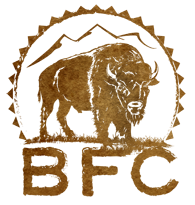Plan Not Based On Best Available Science,
Manage Wild Bison Like Wild Elk
Contacts:
James Holt, Executive Director
Buffalo Field Campaign
This email address is being protected from spambots. You need JavaScript enabled to view it.
(406) 646-0700 (office)
(208) 791-3306 (cell)
Dallas Gudgell, Board Member
Buffalo Field Campaign
This email address is being protected from spambots. You need JavaScript enabled to view it.
West Yellowstone, MT - The National Park Service’s recently released Draft Environmental Impact Statement (DEIS) for Bison Management in Yellowstone National Park fails wild bison. The premise of Yellowstone National Park’s plan is not founded on the best available science, lacks an appropriate federal nexus, and fails the imperiled Central Herd of bison. The “broad range of actions” involves intense human selection to artificially suppress wild populations and are not founded on the best available science. Yellowstone must either scrap the DEIS or amend it to include an environmental alternative that manages wild bison as other wildlife such as elk.

“While we commend the National Park Service for providing leadership where they can, they cannot sustain wild bison alone,” said James Holt, Buffalo Field Campaign’s (BFC) Executive Director. “The Park’s plan represents a piecemeal approach to wild bison management that entrenches the status quo, at a time when we must be acting in a holistic manner. Moving from a policy of slaughter to a policy of domestication doesn’t protect their long-term viability. Intensified human handling and removal called for in the alternatives will have a continued negative impact on their wild characteristics.”
The lack of a federal nexus is failing bison, like it is failing other critical wildlife in the Greater Yellowstone Ecosystem such as grizzlies and wolves. The U.S. Forest Service, U.S. Fish & Wildlife Service, and the Animal and Plant Health Inspection Service continually refuse to change course by adopting appropriate bison policies. Wild bison require ecosystem-based conservation that is afforded other wildlife species such as elk. Failing to do so contributes to the diminishment of their viability throughout the distinct subpopulations.
“Siloed federal governance fails the trust obligations to the American people and to Tribes,” said Dallas Gudgell, BFC Board Member. “Appropriate bison policy and management requires a federal nexus, that includes tribal sovereigns, implementing ecosystem-based conservation. Just as importantly, any adopted plan must identify and protect the imperiled Central Herd. Only then will we have a legitimate planning process that is founded in respecting tribes as sovereigns and facilitates co-created science.”
The long-term viability of the Central Herd a distinct subpopulation is not secure, and the herd has not recovered from Yellowstone National Park capture for slaughter operations conducted during 2006–2008.
There has been no scientific study of Yellowstone bison population viability even though Yellowstone National Park identified this research need as a high priority over two decades ago.
Yellowstone National Park’s analysis misrepresents existing science, ignores science that does not conform to the governments, and thus fails to use the best available science. One primary failure is Yellowstone National Park biologists “suggest” Yellowstone bison are a “single intermixing population” when other scientists have found “strong evidence” of “genetically distinct subpopulations.” If the evidence is contradictory, additional scientific studies are necessary to protect Yellowstone bison genetic diversity.
Buffalo Field Campaign will continue to advocate for the protection of the ailing Central Herd, and an appropriate science-based management policy that will provide stewardship for free- roaming bison throughout the Greater Yellowstone Ecosystem.
Yellowstone National Park is taking public comment through September 25.
https://parkplanning.nps.gov/projectHome.cfm?projectID=94496
Download the press release (PDF)
Read the Draft Environmental Impact Statement for Bison Management
BACKGROUND
“Decision-makers and planners will use the best available scientific and technical information and scholarly analysis to identify appropriate management actions for protection and use of park resources.” (National Park Service Management Policies 2006: 22).
Park biologists counted 3,553 bison in the Central herd in 2005 with a low of 847 recorded in 2017. The most recent count (2022) found 1,432 bison in the Central herd. (Geremia, Status Report on the Yellowstone Bison Population to the Superintendent 2022: 5–6).
The research need for a Yellowstone bison population viability study was identified as a high priority in 2000. (U.S. Dept. of the Interior and U.S. Dept. of Agriculture Bison Management Plan for the State of Montana and Yellowstone National Park, 2000 Final EIS Vol. 1, Appendix D: 731.
"Yellowstone bison are one of a few populations that meet the viability guidelines recommended by scientists (Freese et al. 2007; Sanderson et al. 2008; Hedrick 2009; Dratch and Gogan 2010; Gross et al. 2010). Geneticist Dr. Philip Hedrick at the University of Arizona indicated “[i]ndividual herds or clusters [of bison] should have an effective population size of 1000 (census number of 2000-3000) to avoid inbreeding depression and maintain genetic variation. If it is not possible to have this primary herd in 1 location, then it could be in 2 or 3 locations with significant genetic exchange between them. Note that this is larger than any of the plains bison herds except for Yellowstone NP [National Park] and any of the wood bison herds except for Wood Buffalo NP and Mackenzie Bison Sanctuary in Canada” (Hedrick 2009:419). Although there is evidence of genetic differences between bison sampled in the central and northern breeding herds (Halbert et al. 2012), monitoring of radio-collared bison suggest Yellowstone bison are a single intermixing population during recent decades, with substantial movements, breeding, and gene flow between bison originating from central and northern Yellowstone (White and Wallen 2012; Wallen and White 2015; Forgacs et al. 2016). Thus, Yellowstone bison meet Dr. Hedrick’s criteria for sustaining an effective population size and maintaining genetic variation." (Yellowstone National Park Bison Management Plan Draft EIS 2023: 47–48).
“Before new management standards and policies are defined for the Yellowstone bison population, additional studies involving population structure and genetic diversity based on both mtDNA and nuclear genetic diversity assessments need to be conducted.” (Forgacs et al., Mitochondrial Genome Analysis Reveals Historical Lineages in Yellowstone Bison 2016: 7).
"In conclusion, we have presented strong evidence for the existence of 2 genetically distinct subpopulations of bison . . . Our study has also revealed longitudinal differences in migration patterns among Yellowstone bison, as it appears that bison moving to the park boundary in the vicinity of West Yellowstone are consistently from the Central subpopulation, whereas those moving to the park boundary in the vicinity of Gardiner may originate from either the Central or Northern subpopulation. These observations warrant serious reconsideration of current management practices. The continued practice of culling bison without regard to possible subpopulation structure has the potentially negative long-term consequences of reducing genetic diversity and permanently changing the genetic constitution within subpopulations and across the Yellowstone metapopulation." (Halbert et al., Genetic Population Substructure in Bison at Yellowstone National Park 2012: 368).
Geneticist Dr. Philip Hedrick, Arizona State University, co-authored the Halbert study finding genetically distinct subpopulations of bison in Yellowstone.
End








